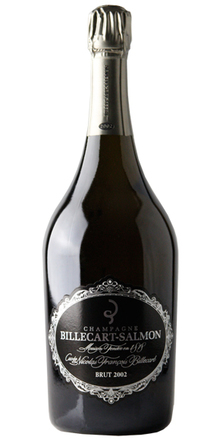
"Antonio Galloni 97/100
A mesmerizing, thrilling Champagne, the 2002 Cuvée Nicolas François Billecart is a great example of the vintage at its best. Silky and racy on the palate, yet a bit more restrained than many wines of the year, the Nicolas François Billecart remains vivid and remarkably nuanced. Brioche. apricot jam, wild flowers and honey are some of the many notes that blossom as the Cuvée Nicolas François Billecart shows off its voluptuous personality. The 2002 is 60% Pinot Noir and 40% Chardonnay. Drink 2017-2042. Vinous.com, July 2015"
Champagne Billecart-Salmon can be found in the village of Mareuil-sur-Aÿ, near Epernay and traces its origins back to 1818. It remains a family concern and is now in the hands of the 7th generation.
Their champagnes are created from fruit drawn from their own 100 hectares of vineyards plus a further 200 hectares they manage under contract, these encompass over 40 crus of the Champagne region. The majority of the come from within 20km around Epernay, where the Grand Crus of Pinot Noir, Meunier and Chardonnay co-exist, in the vineyards of the Montagne de Reims, the Vallée de la Marne and the Côte des Blancs.
In the 1950’s the House established the technique of cold settling combined with the use of stainless steel tanks for a longer fermentation at a lower temperature. The cuverie concentrates primarily on small thermoregulated cuves (47 hectolitres) which allows the House to observe the traceability of the grape varieties and the individual parcels. This vinification is carried out cru by cru and grape variety by grape variety which allows for the conservation of the nuances of expression of the terroir. In vinifying at a low temperature, the fermentation process slows down, encouraging aromatic, which are delicate and allow all the purity of the fruit to be expressed.
The house owns matures many of it’s wines in their chalk cellars that date from 17th and 19th centuries. Over three to four years in cellars the non-vintage champagnes really blossom, whilst the vintage cuvées patiently wait ten years before they begin to reveal their maturity.